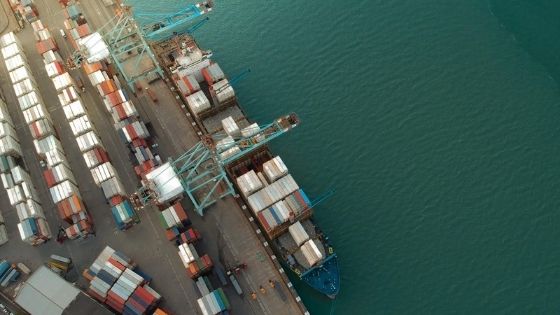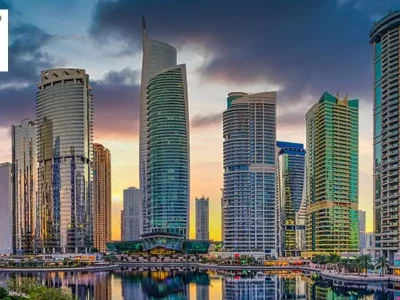If you need to export your goods from one country to another and the volume is pretty high, then your best bet is to choose a Full Container Load or FCL method for shipping your goods. This shipping method is great for transporting heavy items such as furniture, automobiles, electronics, etc. Most of the exporters are familiar with the usage and importance of FCL. But if you’re a new exporter, there are certain things about this transportation method you might be unfamiliar with. Keep reading to know about 5 unknown facts about the FCL method of shipping!
FCL is a safe, cost-effective and fast method of shipping.
Understanding Full Container Load (FCL) Shipping
Full Container Load (FCL) shipping is the most popular method of transporting goods from one place to another via waterways. It is considered to be the best for shipping heavy goods across borders. FCL is basically an incoterm that signifies that the goods or items are enough to fill the entire container. In short, exporters use it to mention that they will utilize the full container by themselves. Generally, the standard size of an FCL freight is 6 pallets in a 20-foot container and 12 in a 40-foot container. This freight option eliminates the risk of damage and contamination of the products. Plus, it is much faster than other methods of transportation.
5 Things You Don’t Know About FCL Freights
Most people know the definition and advantages of FCL shipments. However, there are a lot of other things most exporters are unaware of. Below are some of those hidden facts :
1. FCL Is Often Cheaper Than LCL
When it comes to selecting between FCL and LCL shipping methods, most exporters choose LCL thinking that it is cheaper than the former one. However, this is not always the case. FCL can be a really affordable method of shipping even when your container is not filled to its capacity. For shipments over 14CBM, FCL is the most cost-effective method.
For example: A 20-foot container offers a capacity of 33 CBM. So, if your shipment is around 15 CBM, the chances of it being least expensive are high when compared to sending the same volume in an LCL container of the same size.
The reason behind this is, the capacity of FCL containers is comparatively less than LCL containers. And hence, they are more economical than any other methods of shipping.
2. FCL Is Faster Than LCL
Another great advantage of using FCL shipping is, it offers less transit time when compared to LCL. This is because your container will go straight to the given destination, instead of making multiple stops. Direct shipments reduce the overall time and your goods are delivered without any delay. As compared to other shipping methods, FCL can deliver your goods 4-7 days before LCL.
3. Calculating FCL Shipment In Advance
If you’re confused as to whether or not you should choose the FCL method for shipping your next batch, then calculate your FCL shipment.
The overall shipping cost in the case of FCL shipment depends on two things: the chassis fee and the container rate
The shipment cost of an FCL container is the calculation of the container’s route and size, plus the chassis fee. Here, the chassis fee is the amount for transporting the shipment from the port terminal to the final destination. Perform the following calculations to calculate your approx shipping cost using an FCL container :
- Add the freight cost and chassis fee
- Add the destination port terminal charges
- Add customs clearance fee
- Add delivery charges of the entire freight
4. FCL Pricing Depends on Multiple Factors
If you think that FCL pricing is the same throughout the year, then you’re wrong. FCL freight rates keep fluctuating on the basis of multiple factors :
- General Rate Increases (GRIs): These are price fluctuations that keep occurring every month in response to the increasing or decreasing demands for the freights.
- Seasonal Charges: Generally, the FCL container rates are higher during the peak seasons and lower during the off-seasons. Moreover, peak seasons for FCL shipment fall between August and November. So, if you want to save on the cost, try to ship during end seasons.
By knowing these factors, you can ship your goods at a much affordable cost by selecting the right time and date. To know more about the FCL pricing, click here.
5. Hidden Costs In FCL Shipping
Most exporters don’t know about the additional charges that come with the FCL option. If you’re one of them, consider the following charges before proceeding further :
I. Custom Bonds
Most countries require you to pay for a Customs bond. If you ship more often to the same country, then consider having an annual bond otherwise go for a single entry bond.
II. Customs Duties and Taxes
If you don’t want to complicate your shipping process, then take your time and learn about duties and taxes in advance.
III. Demurrage
Demurrage is the fee you need to pay if the container is not picked on time and made to wait at the port.
IV. Congestion Fee
Congestion surcharge is a fee you might need to pay in case the port is congested.
These are the five important things every exporter should know about the FCL agreement. If your shipping volumes are higher and you want to ensure higher safety, security, and zero delays, then FCL is the best option to choose.

















Comments